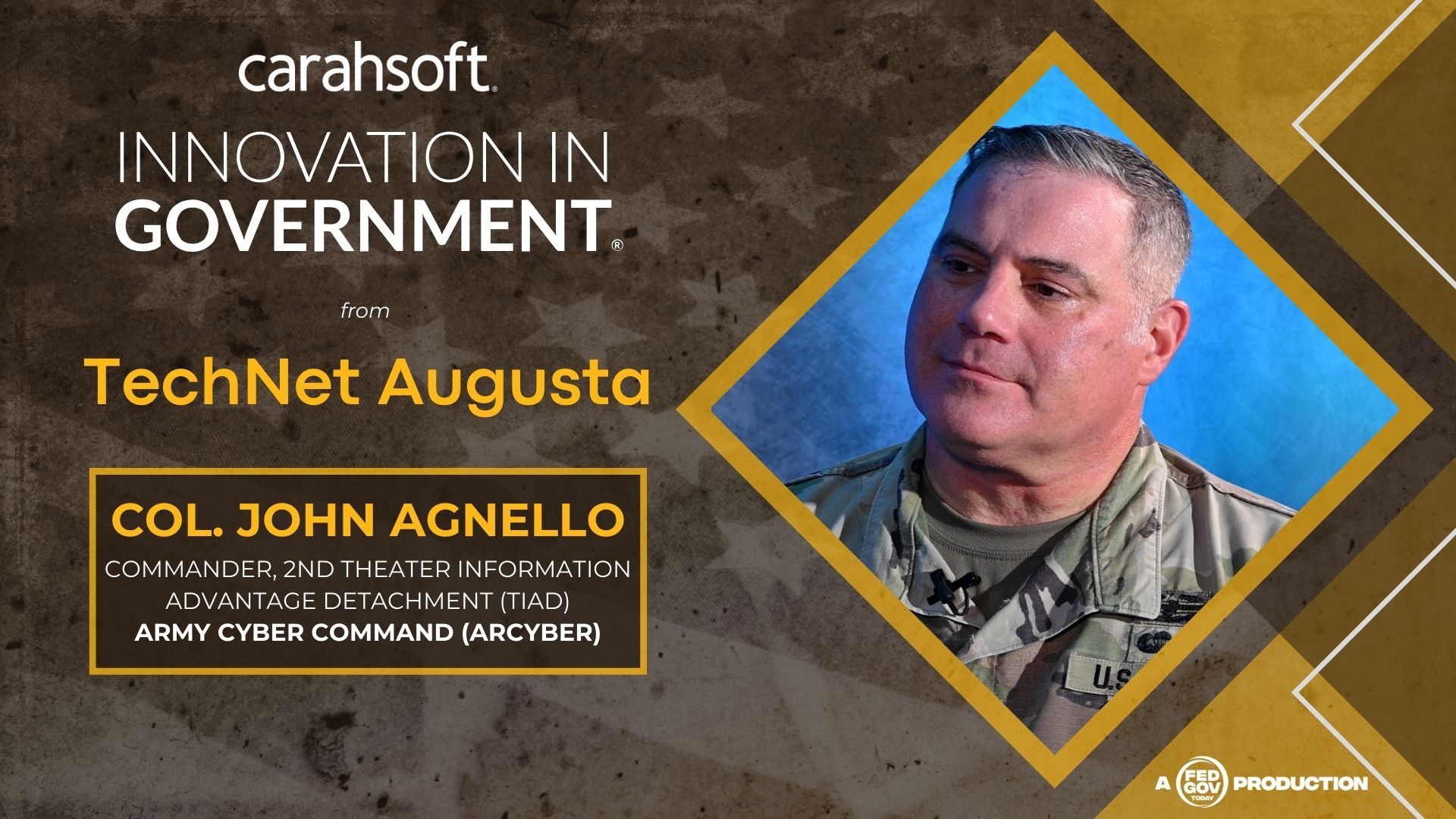Presented by Carahsoft
Colonel Scott Shaffer, Project Manager for Electronic Warfare & Cyber at PEO IEW&S, has a clear mission: deliver electromagnetic spectrum superiority for the Army — and do it faster than ever before. At TechNet Augusta, he shared how his office is changing acquisition, prototyping, and training to meet the urgency of today’s threats.
Shaffer’s top priority is speed. Traditional acquisition timelines, where systems are developed from the ground up over many years, no longer match the pace of adversary innovation. Instead, he wants to leverage commercial technologies, integrate them quickly, and move from prototype to fielding in record time. By taking capabilities into exercises and capstone events early, soldiers can test them in real-world conditions, provide feedback, and drive rapid improvements. If the systems work, they can be fielded right away.
 Teamwork is the enabler of this speed. Shaffer stresses that government program offices, industry, and the requirements and resourcing community must work together in sync. Exercises such as Project Convergence give his office the chance to bring new kit directly to soldiers, who can then shape its development with real feedback. That loop of observation, adjustment, and refinement is critical to delivering capabilities soldiers will actually use.
Teamwork is the enabler of this speed. Shaffer stresses that government program offices, industry, and the requirements and resourcing community must work together in sync. Exercises such as Project Convergence give his office the chance to bring new kit directly to soldiers, who can then shape its development with real feedback. That loop of observation, adjustment, and refinement is critical to delivering capabilities soldiers will actually use.
Flexibility in requirements is another priority. Instead of locking in rigid requirements years in advance, Shaffer favors “soft guidance” — a broad direction that can adapt as technology evolves. Experiments and assessments allow requirements to be updated based on what’s possible today and what soldiers need most urgently. Sometimes this means scaling back features that technology cannot yet deliver, while in other cases it means discovering entirely new capabilities that weren’t anticipated at the outset.
To support this flexibility, Shaffer is turning to acquisition tools like Other Transaction Authorities (OTAs) and Agile funding. These mechanisms give his team the ability to bypass some of the slower processes in the Federal Acquisition Regulation, move quickly into prototyping, and adjust funding to accelerate promising capabilities. He acknowledges that speed comes with risk but believes that with the right oversight and collaboration, it’s a necessary risk to maintain spectrum dominance.
Training is another critical component. Shaffer compares it to owning a smartphone: without proper training, even the most advanced device is useless. Soldiers must understand not just how to operate new electronic warfare systems but also how to employ them tactically. His office is exploring more visual, hands-on training packages that combine classroom, virtual, and field instruction. By allowing soldiers to make mistakes in controlled environments and then practice in real-world conditions, training ensures that new systems are not just fielded quickly but used effectively.
One example of this approach is spectrum situational awareness. Shaffer describes it as helping soldiers “see themselves” in the electromagnetic spectrum, understanding the signature their command post or unit emits and how that could be targeted. By fielding prototypes quickly to units like the 25th Infantry Division and SOCOM, his team gathered feedback that informed refinements. The cycle — contract award, soldier assessment, and fielding in the same year — is leaps ahead of traditional timelines.
Shaffer also points to cultural change as a major factor in accelerating innovation. He highlights the creation of an Electronic Warfare Board of Directors, which brings together leaders from EW, cyber, signals, and acquisition communities to align priorities and take informed risks in moving fast. By putting all stakeholders in the same room, the Army can ensure momentum is sustained and decisions are made with broad support.
Ultimately, Shaffer believes the Army is on the right trajectory. The cultural shift toward speed, flexibility, and collaboration is taking root, and soldiers are already seeing the benefits in faster delivery of critical capabilities. Maintaining superiority in the electromagnetic spectrum will require constant adaptation, but with this new approach, the Army is better positioned to keep pace with adversaries.



